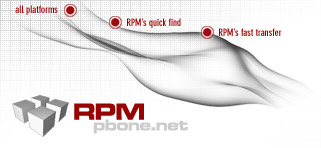| Name : perl-Embedix-ECD
| |
| Version : 0.09
| Vendor : obs://build_opensuse_org/devel:languages:perl
|
| Release : 179.51
| Date : 2024-08-05 18:18:27
|
| Group : Development/Libraries/Perl
| Source RPM : perl-Embedix-ECD-0.09-179.51.src.rpm
|
| Size : 0.09 MB
| |
| Packager : (none)
| |
| Summary : Embedix Component Descriptions as objects
|
Description :
Embedix::ECD allows one to represent ECD files as a tree of perl objects.
One can construct objects by parsing an ECD file, or one can build an ECD
object from scratch by combining instances of Embedix::ECD and its
subclasses. These objects can then be turned back into ECD files via the
\'toString()\' method.
ECD stands for Embedix Component Description, and its purpose is to contain
meta-data regarding packages (aka components) in the Embedix distribution.
ECD files contain much of the same data a .spec file does for an RPM. A
major difference however is that ECD files do not contain building
instructions whereas .spec files do. Another major difference between .spec
files and ECD files is the structure. ECD files are hierarchically
structured whereas .spec files are comparatively flat.
The ECD format reminds me of the syntax for Apache configuration files.
Items are tag-delimited (like in XML) and attributes are found between
these tags. Comments are written by prefixing them with /^\\s*#/. Unlike
apache configurations, attribute names and values are separated by an \"=\"
sign, whereas in apache the first token is the attribute name and
everything after that (sans leading whitespace) and up to the end of the
line is the attribute\'s value. Also, unlike apache configurations,
attributes may also be enclosed in tags, whereas in apache tags are used
only to describe nodes.
ECD files look like pseudo-XML with shell-styled comments.
|
RPM found in directory: /packages/linux-pbone/ftp5.gwdg.de/pub/opensuse/repositories/devel:/languages:/perl:/CPAN-E/openSUSE_Tumbleweed/noarch |
